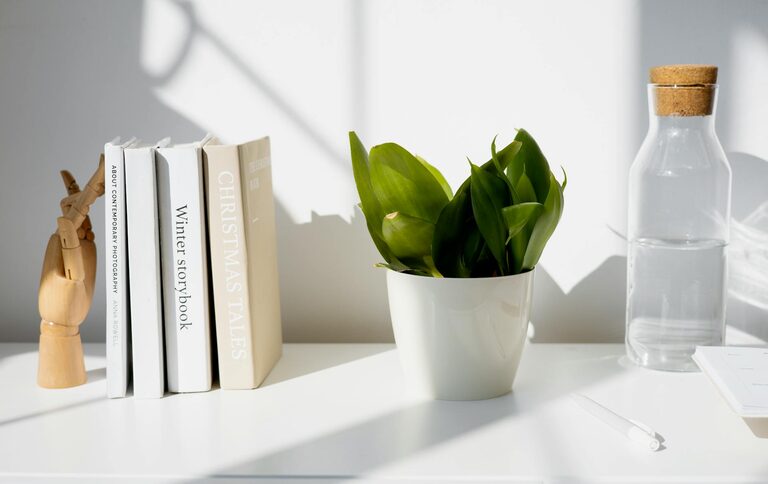Creating a relaxing home workspace is essential for maintaining focus, reducing stress, and enhancing productivity. Whether you work remotely full-time or occasionally, your environment can greatly influence your mood and output. In this post, we’ll explore practical ways to design a calming and efficient workspace at home that helps you stay relaxed and motivated.
Why a Relaxing Workspace Matters
A workspace that feels comfortable and peaceful can improve concentration, creativity, and overall well-being. On the other hand, clutter, poor lighting, or uncomfortable furniture may lead to frustration and fatigue. By paying attention to key elements like layout, lighting, and decor, you can create an area that supports both focus and relaxation.
Choose the Right Location
Pick a Quiet Corner
Find a spot in your home that’s away from high-traffic areas and distractions. A quiet corner or a spare room can be ideal for deep work. If space is limited, consider using room dividers or noise-canceling headphones to minimize interruptions.
Consider Natural Light
Natural light boosts mood and reduces eye strain. Position your desk near a window if possible. If natural light is scarce, use soft, warm artificial lighting to create a cozy atmosphere.
Invest in Comfortable Furniture
Ergonomic Chair and Desk
Comfort is key to staying relaxed during long work hours. Invest in a chair that supports your back and encourages good posture. An adjustable desk, or even a sit-stand desk, can help you change positions throughout the day.
Declutter Your Workspace
A clutter-free space reduces stress and distractions. Use organizers, shelves, or drawers to keep documents and supplies out of sight but easily accessible. Limit what you keep on the desk to frequently used items only.
Create a Calming Color Scheme
Colors can affect mood and productivity. Soft, muted tones such as light blues, greens, or neutrals are known to have a calming effect. Avoid overly bright or harsh colors that might be distracting or stressful when you look at them for hours.
Add Personal Touches Wisely
While it’s good to personalize your workspace to make it inviting, avoid overloading it with decor that can become distracting. A few meaningful items like a favorite photo, a small plant, or inspiring quotes can create a welcoming atmosphere without cluttering the space.
Incorporate Nature Elements
Indoor Plants
Plants are proven to reduce stress and improve air quality. Choose easy-to-care-for varieties such as succulents, snake plants, or pothos. Placing a plant or two on your desk or nearby shelves brings a touch of nature indoors.
Natural Materials
Wooden furniture or accessories, woven baskets, and natural fabrics add warmth and texture, contributing to a relaxing environment.
Manage Noise and Distractions
Sound Control
Use rugs, curtains, or acoustic panels to dampen noise. Playing soft background music or nature sounds can also help mask disruptive noises and enhance focus.
Digital Detox
Keep your phone on silent or in another room during focused work periods to minimize interruptions. Organize your digital workspace by managing notifications and keeping your desktop tidy.
Optimize Air Quality and Temperature
Good ventilation and a comfortable temperature can enhance your comfort and alertness. Open a window when possible, use an air purifier, and adjust your thermostat to a level that keeps you comfortable without feeling too warm or cold.
Establish a Routine for Mental Relaxation
Take Regular Breaks
Step away from your workspace at regular intervals to stretch, breathe deeply, or take a short walk. This helps prevent burnout and keeps your mind fresh.
Mindfulness Practices
Incorporate simple mindfulness exercises such as deep breathing or a few minutes of meditation before or during work to maintain calmness and reduce stress.
Keep It Organized with Daily Habits
Spend a few minutes at the end of each day tidying your workspace and setting priorities for the next. A clean, organized desk helps you start fresh and stay relaxed.
Final Thoughts
Creating a relaxing home workspace doesn’t require a big budget or a lot of time. By thoughtfully choosing your location, furniture, colors, and decor, and by managing noise and clutter, you can build an environment that supports both productivity and well-being. Remember, your workspace should feel like a place where you enjoy spending time — comfortable, calming, and tailored to your needs.
—
With these straightforward tips, you can transform your home office into a sanctuary of calm and creativity, making workdays more enjoyable and less stressful. Happy decorating!

